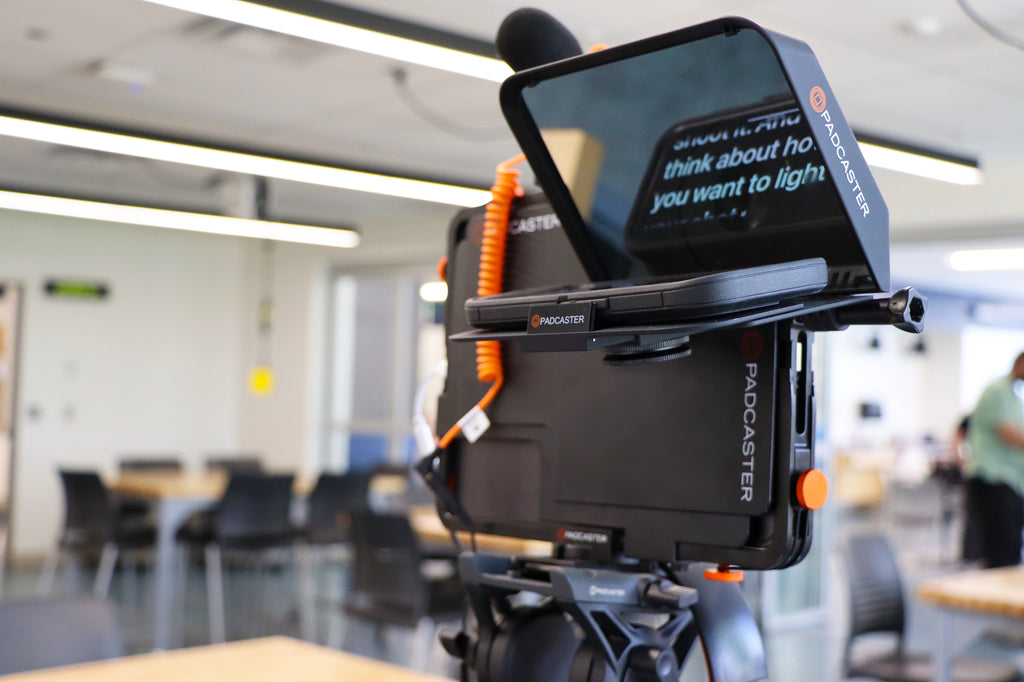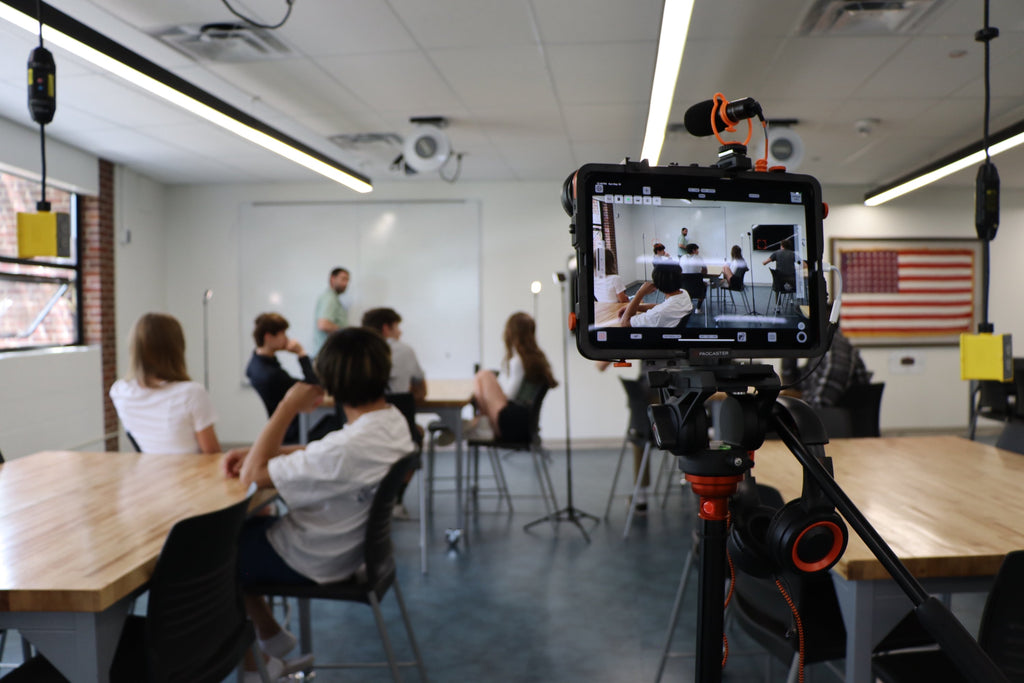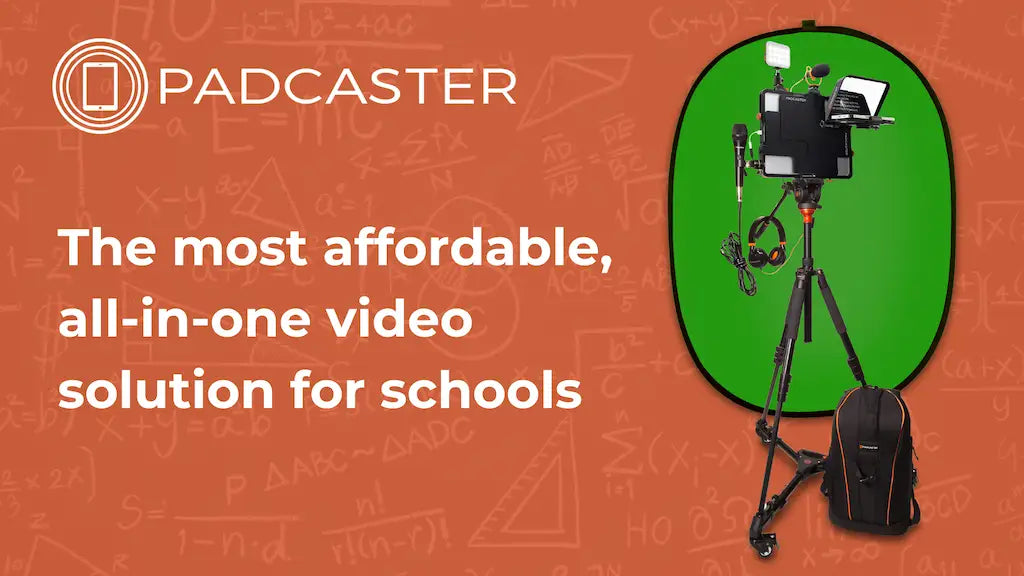
There are many different ways to approach a student broadcast program and no one right way to do it. After talking to dozens of educators we’ve put together a list of a few important questions you will want to ask yourself before you start designing your program.
What are your program’s expectations and goals?
This may seem like a no brainer, but it is important to establish where you want to take the program. This means defining the goals of the administration, your students, and even yourself. Good examples of these goals could be:
- X amount of produced shows
- Transfering most of the responsibility to the students
- Working up to a live-broadcast
- Regularly involving other school organizations
- Having special guests from the community give interviews
- Having X amount of online content.
- Get X amount of followers on your show’s YouTube or Facebook profile
- Getting involved with the local TV news station
- Producing X amount of student-run segments
Keeping these in mind as you progress will help give your program direction, but you can always grow and evolve if need be.
How long, what time of day and how frequently will your broadcast be?
All of these questions are related because the biggest factor in the length of the show should be the frequency. If you’re broadcasting every day, three to five minutes should be plenty, especially if you are planning on broadcasting during school hours in the classroom. Producing a show every day is no easy task but can be an amazing achievement if you and your students can manage to pull it off.
If you decide to record and stream every day, the best time in which to broadcast is the morning. Students will be settling into their day, and it’s a great opportunity for any daily announcements. Broadcasting near the middle or at the end of the day is still great but it may be harder to coordinate and student attention might not be as focused. Every school is different and you should do whatever works best for your school and students.
Producing a show once a week or once a month is still an accomplishment and can potentially run longer due to more time to plan and execute the show. Even if you are producing a show on a weekly or monthly basis we still recommend keeping it under 15 minutes to hold your student audience’s attention. Having a consistent day of the week or month to show your broadcast is also important so students know when to expect your show and your team can learn to observe deadlines.
What kind of segments do you want your news broadcast to have?
This is a decision that you can make by yourself or collaborate with your students about. We definitely recommend looking at traditional news segments and putting your school’s spin on them like weather, sports, and breaking news. You can also produce segments that play off of the uniqueness of your school as in highlighting a special program or taking a closer look at a fun school tradition. Thinking outside of your school is also a great idea, such as featuring members of the community or small local businesses. any speaker or outside organization that’s stopping by the school can be considered as a potential interview.
Segments can be recurring but feel free to try one-offs so students get the chance to experiment with different things. As you experiment and progress, it might make sense to have recurring segments to give the broadcast some structure. For example, every Monday you can report on the weather for the week while every Friday you could do a short movie review.
How will you broadcast your show?
Ideally, you will be able to stream your student news show into every classroom. Whether that’s by streaming it live online or by pre-recording it the day before and sending it out to teachers to play. Both are good options but we recommend to always keep an archive of your shows to rewatch and to keep track of progress. If you’re worried about the universal access of platforms like YouTube we recommend educational-centric video hosting sites such as SchoolTube (you can read our article on ithere).
What should student roles and responsibilities be?
The more responsibilities and ownership you give your students over projects the harder they will try and the more they will get out of it. There are plenty of different roles when it comes to broadcasting and you can choose as many or as few as you need for your team. Here are a few to get you started:
- Cameraperson
- On-air anchor
- Weatherperson
- Interviewer
- Editor
- Sound editor
- Scriptwriter
- On-location reporter
- Producer and executive producer
- Social media manager
Some students will feel more comfortable on camera than filming with it and vice versa so most schools choose to rotate jobs so all students get a chance to try each role. This will help your students better understand how each job works together to produce a whole show and potentially discover that they might like something they previously were nervous about.
Choosing students randomly for roles is a great way to make it fair but we recommend first asking your class what roles they might be first interested in and starting there. This method is ideal for lower grades when kids are still getting over their shyness and are still learning about the basics of broadcasting.
If your broadcast team is high school level you have the opportunity to give roles more responsibilities and to treat your show like a real news broadcast. Still rotating positions but instead of automatically placing students into rolls have them interview to create a real-world experience.
Padcaster transforms your iPad or smartphone into an all-in-one mobile production studio so you can create professional-quality videos from your home or anywhere else. Whether it’s for distance learning, telecommuting, remote broadcasting or livestreaming -- Padcaster will help you produce high-quality content wherever you are. If you are adjusting to distance learning and have any questions, Padcaster wants to help you! Fill out the form below to get in touch with one of our sales consultants!
Need More Information?
Fill out the form here to get in touch with a member of the Padcaster Team.


